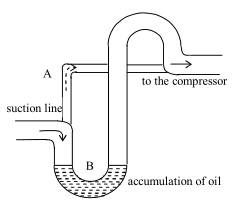Product description NALFLEET "SEA SHIELD" DISC/FILTER CLEAN is a mixture of solvents, proprietary su...
NALFLEET "SEA SHIELD" DISC/FILTER CLEAN is a mixture of solvents, proprietary surfactants
and an organic acid. It is designed specifically for the removal of oily residues and lacquers found in fuel
oil and lube oil purifiers and filters.
NALFLEET "SEA SHIELD" DISC/FILTER CLEAN does not contain any phenols, cresylic acid,
chlorinated hydrocarbons and less than 10% aromatics. The formulation meets the latest regulations from
MARPOL 73/78 as recommended by the Bulk Liquids and Gases (BLG) working group of the Marine
Environmental Protection Committee (MEPC) of the International Marine Organization (IMO), and is
approved by that committee on behalf of IMO. These regulations, effective 1st July 1996, state that
additives used for cleaning ship's tanks must contain less than 10% of a Pollution Category A product.
(Annex II of MARPOL 73/78 now states that petrochemical complex mixtures of hydrocarbons
containing more than 10 wt % of C3-C8 alkylbenzenes (i.e. C9-C14 aromatics) and/or poly (C2 and above)
cyclic aromatics, are assigned to Pollution Category A.)
The formulation also meets the latest OSPARCOM regulations which ban the use of surfactants based
on Alkyl Phenol Ethoxylates in cleaning products.
(The reason for this ban is that Alkyl Phenol Ethoxylates degrade in the environment to Alkyl Phenol
which is persistent and slightly oestrogenic-affects the reproduction cycle of organisms)
参考解析:
1. The product is most suitable for removing _______.
A. solvents
B. proprietary surfactants
C. organic acids
D. oily residues and lacquers
2. Which of the following statements is NOT correct?
A. The product can be used not only in fuel oil purifiers and filters but also in lube oil purifiers and filters.
B. The product is a mixture of a number of substances.
C. There is not any cresylic acid in the product.
D. The product does not contain any aromatics.
3. From the passage, we can learn that Annex II of MARPOL 73/78 concerns on the discharging rules of _______.
A. oily water
B. poisonous liquid
C. solid garbage
D. sanitary sewage
4. The word “ban” in the passage can be replaced by ________.
A. permit
B. warn
C. forbid
D. prevent


 百度扫一扫练题
百度扫一扫练题
 关注千题库公众号
关注千题库公众号








